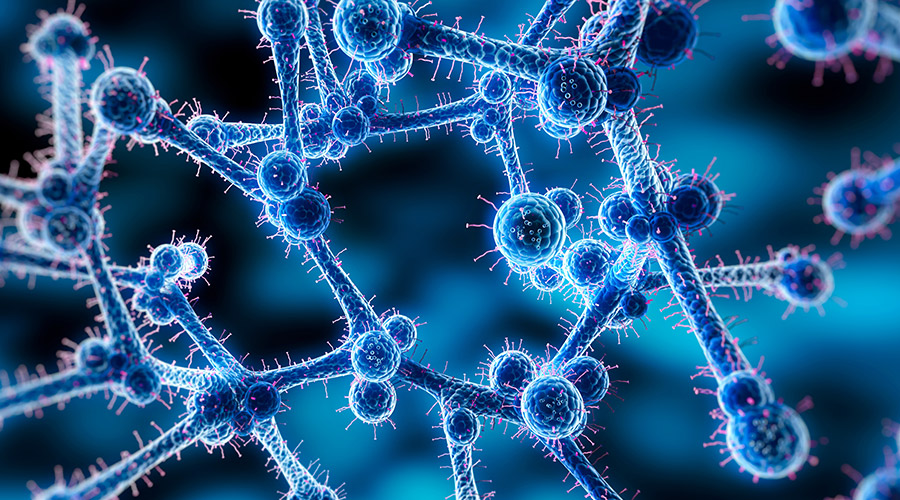Most people think about powering medical devices with batteries, cables, and cords. And while some are powered this way, these methods aren’t always the most efficient, for either the patient or the medical facility. Batteries eventually need to be replaced, for example, and devices connected by cables or cords not only need a backup source of power in the event of a service disruption, but can increase costs for the facility and/or the user due to power consumption.
Because devices are such an important part of the delivery of quality care — and managing them is a key part of an effective facilities management plan — engineers are looking for ways to reduce medical device power usage while still maintain the same level of functionality. There are several developments on the horizon to help with this effort, with three showing some significant potential: Ultra-low-power microchips, energy harvesting, and low-power radios for communication.
1. Ultra-Low-Power Microchips
Microchips can be found in everything from advanced medical imaging systems to tiny implantable devices — and everything in between. By some accounts, there have been more than 10.3 million consumer medical devices manufactured in the last four years alone, including blood pressure, heart rate, body temperature, and glucose monitors. Regardless of the type of device, though, a microchip’s integrated circuits are able to maximize the power efficiency while also increasing the power density balancing the static and active energy states.
That being said, in many cases power consumption is a limiting factor in these devices. Therefore, engineers are devising ultra-low-power microchips with EEPROM to conserve device battery life and allow the devices to last longer, therefore reducing costs associated with the replacing devices and/or batteries. By equipping medical devices with the lowest power chips available, they can function just as efficiently — if not more so — without causing a significant drain on device power.
2. Energy Harvesting
While ultra-low-power microchips are a relatively simple solution to reducing power usage in medical devices, another solution looks to find an alternative source of power. In fact, some experts note that finding alternative sources of power for IoT-connected devices is an important priority, because without it, the IoT is likely to prove unsustainable.
Energy harvesting, then, is being looked at as a viable option for powering IoT devices. Scientists are looking at different sources of energy to help power medical devices, such as solar power or kinetic energy captured from the user’s movements. While energy harvesting holds a great deal of potential for powering medical devices, one of the challenges is finding a reliable, constant source of energy that can power devices continuously. Undoubtedly, though, we will be hearing more about energy harvesting as we move into the future.
3. Low-Power Radios
One of the most important aspects of an IoT medical device is the communications link that connects it to other IoT devices in a hospital. In order for an IoT link to be viable, it must have a low standby current, wide supply voltage, and adherence to the international standard. Ideally, the device must be low power as well. A low-power radio module is both affordable and uses less power. In addition, LPR modules use multiple bands and channels, and are able to transmit data over various channels to avoid interference.
What makes LPRs ideal for medical devices is that they save power by only turning the transmitters on for data transmission. Otherwise, the device is in power-saving standby mode. Thanks to the wide supply voltage, the device will continue to work even if the conditions aren’t ideal, or if the battery is nearly depleted.
These are just some of the ways that medical device manufacturers are working to reduce the power consumption of equipment. With so many patients now using medical devices, particularly IoT-enabled devices, it’s more important than ever before to ensure that they work efficiently and do not put a drain on facility resources. With these, and other, advancements, it’s very likely that in the future medical devices will not require replacement batteries or the need to be recharged, “plugged” in, or otherwise powered by an outside source, but will instead be entirely self-powered or capable of working for many years without replacement.
Jackie Roberson is a content coordinator with Seek Visibility.

 Strategies to Eradicate Biofilm Containing C. Auris
Strategies to Eradicate Biofilm Containing C. Auris Man Attacks Nurses, Police Officer at Jefferson Hospital
Man Attacks Nurses, Police Officer at Jefferson Hospital Freeman Health System Breaks Ground on New Full-Service Hospital
Freeman Health System Breaks Ground on New Full-Service Hospital All Eyes on Gen Z as They Enter the Workforce
All Eyes on Gen Z as They Enter the Workforce Cleveland Clinic Starts Fundraising Effort for New Hospital in West Palm Beach
Cleveland Clinic Starts Fundraising Effort for New Hospital in West Palm Beach